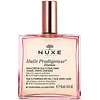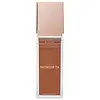What's inside
What's inside
 Key Ingredients
Key Ingredients

 Benefits
Benefits

 Concerns
Concerns

 Ingredients Side-by-side
Ingredients Side-by-side

Coco-Caprylate/Caprate
EmollientMacadamia Integrifolia Seed Oil
Skin ConditioningDicaprylyl Ether
EmollientCaprylic/Capric Triglyceride
MaskingPrunus Amygdalus Dulcis Oil
Skin ConditioningCorylus Avellana Seed Oil
EmollientParfum
MaskingCamellia Oleifera Seed Oil
Skin ConditioningCamellia Japonica Seed Oil
EmollientTocopherol
AntioxidantArgania Spinosa Kernel Oil
EmollientBorago Officinalis Seed Oil
EmollientTocopheryl Acetate
AntioxidantHelianthus Annuus Seed Oil
EmollientRosmarinus Officinalis Leaf Extract
AntimicrobialPolyglyceryl-3 Diisostearate
EmulsifyingAscorbic Acid
AntioxidantLimonene
PerfumingLinalool
PerfumingCitral
PerfumingCitronellol
PerfumingHydroxycitronellal
PerfumingGeraniol
PerfumingCoco-Caprylate/Caprate, Macadamia Integrifolia Seed Oil, Dicaprylyl Ether, Caprylic/Capric Triglyceride, Prunus Amygdalus Dulcis Oil, Corylus Avellana Seed Oil, Parfum, Camellia Oleifera Seed Oil, Camellia Japonica Seed Oil, Tocopherol, Argania Spinosa Kernel Oil, Borago Officinalis Seed Oil, Tocopheryl Acetate, Helianthus Annuus Seed Oil, Rosmarinus Officinalis Leaf Extract, Polyglyceryl-3 Diisostearate, Ascorbic Acid, Limonene, Linalool, Citral, Citronellol, Hydroxycitronellal, Geraniol
Paraffinum Liquidum
EmollientCaprylic/Capric Triglyceride
MaskingSilica Dimethyl Silylate
EmollientParfum
MaskingEthylene/Propylene/Styrene Copolymer
Trimethylsiloxysilicate
EmollientButyrospermum Parkii Butter
Skin ConditioningMica
Cosmetic ColorantTrihydroxystearin
Skin ConditioningOryza Sativa Bran Extract
Skin ConditioningBisabolol
MaskingEthylhexyl Olivate
Skin ConditioningCalcium Sodium Borosilicate
Helianthus Annuus Extract
EmollientTheobroma Grandiflorum Seed Butter
Skin ConditioningEuterpe Oleracea Fruit Oil
Skin ConditioningTocopherol
AntioxidantRosmarinus Officinalis Extract
AntimicrobialButylene/Ethylene/Styrene Copolymer
Squalane
EmollientTin Oxide
AbrasiveBHT
AntioxidantAlpha-Isomethyl Ionone
PerfumingBenzyl Salicylate
PerfumingCitral
PerfumingCoumarin
PerfumingLimonene
PerfumingLinalool
PerfumingIron Oxides
CI 77891
Cosmetic ColorantParaffinum Liquidum, Caprylic/Capric Triglyceride, Silica Dimethyl Silylate, Parfum, Ethylene/Propylene/Styrene Copolymer, Trimethylsiloxysilicate, Butyrospermum Parkii Butter, Mica, Trihydroxystearin, Oryza Sativa Bran Extract, Bisabolol, Ethylhexyl Olivate, Calcium Sodium Borosilicate, Helianthus Annuus Extract, Theobroma Grandiflorum Seed Butter, Euterpe Oleracea Fruit Oil, Tocopherol, Rosmarinus Officinalis Extract, Butylene/Ethylene/Styrene Copolymer, Squalane, Tin Oxide, BHT, Alpha-Isomethyl Ionone, Benzyl Salicylate, Citral, Coumarin, Limonene, Linalool, Iron Oxides, CI 77891
 Reviews
Reviews

Ingredients Explained
These ingredients are found in both products.
Ingredients higher up in an ingredient list are typically present in a larger amount.
This ingredient is an emollient, solvent, and texture enhancer. It is considered a skin-softener by helping the skin prevent moisture loss.
It helps thicken a product's formula and makes it easier to spread by dissolving clumping compounds.
Caprylic Triglyceride is made by combining glycerin with coconut oil, forming a clear liquid.
While there is an assumption Caprylic Triglyceride can clog pores due to it being derived from coconut oil, there is no research supporting this.
Learn more about Caprylic/Capric TriglycerideCitral is a fragrance and used to add a lemon-like scent to products. It is both naturally found in plants and created synthetically. In plants, it is commonly occurring in lemon myrtle, lemongrass, lemon tea-tree, lemon verbena, and other citruses.
The EU mandates Citral be listed separately as a fragrance. It is a known allergen and may cause contact dermatitis. Citral can also used as a masking ingredient.
The term 'fragrance' is not regulated in many countries. In many cases, it is up to the brand to define this term. For instance, many brands choose to label themselves as "fragrance-free" because they are not using synthetic fragrances. However, their products may still contain ingredients such as essential oils that are considered a fragrance.
The term 'citral' is a collective term for two geometric isomers: geranial/Citral A and neral/Citral B.
Learn more about CitralLimonene is a fragrance that adds scent and taste to a formulation.
It's found in the peel oil of citrus fruits and other plants such as lavender and eucalyptus. The scent of limonene is generally described as "sweet citrus".
Limonene acts as an antioxidant, meaning it helps neutralize free radicals.
When exposed to air, oxidized limonene may sensitize the skin. Because of this, limonene is often avoided by people with sensitive skin.
The term 'fragrance' is not regulated in many countries. In many cases, it is up to the brand to define this term. For instance, many brands choose to label themselves as "fragrance-free" because they are not using synthetic fragrances. However, their products may still contain ingredients such as essential oils that are considered a fragrance.
Learn more about LimoneneLinalool is a fragrance and helps add scent to products. It's derived from common plants such as cinnamon, mint, citrus, and lavender.
Like Limonene, this ingredient oxidizes when exposed to air. Oxidized linalool can cause allergies and skin sensitivity.
This ingredient has a scent that is floral, spicy tropical, and citrus-like.
Learn more about LinaloolParfum is a catch-all term for an ingredient or more that is used to give a scent to products.
Also called "fragrance", this ingredient can be a blend of hundreds of chemicals or plant oils. This means every product with "fragrance" or "parfum" in the ingredients list is a different mixture.
For instance, Habanolide is a proprietary trade name for a specific aroma chemical. When used as a fragrance ingredient in cosmetics, most aroma chemicals fall under the broad labeling category of “FRAGRANCE” or “PARFUM” according to EU and US regulations.
The term 'parfum' or 'fragrance' is not regulated in many countries. In many cases, it is up to the brand to define this term.
For instance, many brands choose to label themselves as "fragrance-free" because they are not using synthetic fragrances. However, their products may still contain ingredients such as essential oils that are considered a fragrance by INCI standards.
One example is Calendula flower extract. Calendula is an essential oil that still imparts a scent or 'fragrance'.
Depending on the blend, the ingredients in the mixture can cause allergies and sensitivities on the skin. Some ingredients that are known EU allergens include linalool and citronellol.
Parfum can also be used to mask or cover an unpleasant scent.
The bottom line is: not all fragrances/parfum/ingredients are created equally. If you are worried about fragrances, we recommend taking a closer look at an ingredient. And of course, we always recommend speaking with a professional.
Learn more about ParfumTocopherol (also known as Vitamin E) is a common antioxidant used to help protect the skin from free-radicals and strengthen the skin barrier. It's also fat soluble - this means our skin is great at absorbing it.
Vitamin E also helps keep your natural skin lipids healthy. Your lipid skin barrier naturally consists of lipids, ceramides, and fatty acids. Vitamin E offers extra protection for your skin’s lipid barrier, keeping your skin healthy and nourished.
Another benefit is a bit of UV protection. Vitamin E helps reduce the damage caused by UVB rays. (It should not replace your sunscreen). Combining it with Vitamin C can decrease sunburned cells and hyperpigmentation after UV exposure.
You might have noticed Vitamin E + C often paired together. This is because it is great at stabilizing Vitamin C. Using the two together helps increase the effectiveness of both ingredients.
There are often claims that Vitamin E can reduce/prevent scarring, but these claims haven't been confirmed by scientific research.
Learn more about Tocopherol